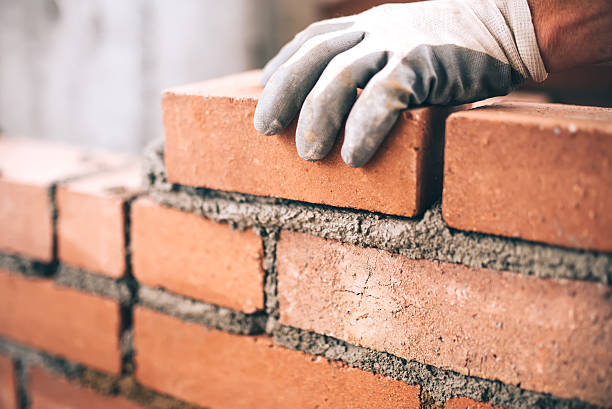Set Up a Chimney Sweep Today for a Clean and Safe Fire Place
Set Up a Chimney Sweep Today for a Clean and Safe Fire Place
Blog Article
Unlocking the Tricks of Sustainable Masonry Construction Practices for Eco-Friendly Structures
Among the myriad strategies to environmentally friendly structure, sustainable stonework building and construction stands out as a time-tested and long lasting technique that holds a wide range of untapped capacity. From the choice of materials to innovative construction techniques, the keys to attaining sustainability within stonework building are diverse and fascinating.
Advantages of Lasting Masonry Construction
Embracing lasting stonework building and construction techniques not just decreases environmental influence but also offers lasting economic benefits to home builders and areas. By making use of materials like recycled bricks, obstructs, and stones, contractors can dramatically decrease the carbon impact of their tasks while promoting resource efficiency. Furthermore, lasting masonry building and construction strategies, such as proper insulation and thermal mass residential or commercial properties, can improve power effectiveness within structures, bring about minimized operational expenses with time.
In addition, the sturdiness and durability of stonework structures contribute to long-term financial advantages. Buildings created using sustainable masonry methods typically need much less repair and maintenance, equating to set you back financial savings for home builders and homeowner. The long life of stonework products additionally guarantees that frameworks stay secure and protected, reducing the need for frequent improvements or substitutes.
Eco-Friendly Stonework Products
Utilizing green stonework products is a crucial step towards enhancing the sustainability of construction techniques and reducing ecological influence while making best use of long-lasting financial benefits. Lasting masonry materials are sourced, produced, and utilized in a way that minimizes total ecological effect. Products such as recycled blocks, redeemed stone, and sustainable cinder block are ending up being significantly prominent choices for eco-conscious builders. Recycled blocks, as an example, not just draw away waste from landfills however additionally require less energy to create contrasted to new bricks. Redeemed rock provides a special aesthetic allure while decreasing the requirement for new quarrying. Sustainable concrete blocks integrate recycled aggregates and may feature better insulation buildings, adding to energy performance in structures.
Moreover, natural products like adobe, rammed earth, and straw bundles provide excellent thermal mass residential properties, minimizing the need for home heating and cooling power. These products are often locally available, advertising local economic climates and lowering transportation-related carbon discharges. By selecting environmentally friendly masonry materials, building projects can considerably lower their environmental impact and add to the creation of much healthier, extra sustainable built environments.
Energy-Efficient Stonework Methods
Power effectiveness plays a critical function in boosting the sustainability of stonework construction practices. One crucial energy-efficient stonework technique is the usage of thermal mass, which entails integrating thick materials like concrete or brick right into the structure's framework to take in and save warm.

Innovations in Sustainable Stonework
Current developments in lasting masonry techniques have actually produced innovative techniques that are reshaping the building sector. One such development is the advancement of self-healing concrete, which uses germs embedded within the concrete to heal cracks autonomously. This development not just minimizes maintenance costs but additionally enhances the toughness of masonry frameworks, contributing to their sustainability.
Another significant innovation is the usage of recycled aggregates in masonry building - masonry contractor. By incorporating materials such as crushed ceramic waste or recycled glass into concrete blends, Continue contractors can minimize the environmental influence of building and construction jobs while maintaining architectural stability. This practice not only draws away waste from garbage dumps but likewise saves natural sources, making it an essential advancement in sustainable masonry construction
In addition, the assimilation of digital layout devices, such as Structure Details Modeling (BIM), is revolutionizing the way stonework frameworks are intended and created. BIM enables even more specific estimations, lowered material waste, and enhanced energy effectiveness, inevitably resulting in more sustainable structure techniques. These developments collectively represent a promising future for sustainable masonry building and construction in the age of eco-friendly structures.
Future Trends in Stonework Sustainability
With the innovative strides made in sustainable masonry practices, the future trends in stonework sustainability are poised to additional revolutionize the building and construction industry. Among the vital fads shaping the future of masonry sustainability is the boosted combination of modern technology. Developments such as Building Info Modeling (BIM) and virtual fact simulations are being utilized to maximize stonework construction procedures, bring about lowered material waste and enhanced energy performance in buildings.
Moreover, the development of novel sustainable materials is readied to play a significant role in boosting the eco-friendliness of stonework construction. masonry contractor. Innovations like self-healing concrete, recycled accumulations, and bio-based binders are gaining traction for their ability to minimize environmental effect while keeping architectural stability

Conclusion
In final thought, sustainable masonry construction methods supply numerous benefits for environmentally friendly buildings. masonry contractor. Innovations in lasting masonry are continually being created check to additionally boost the ecological efficiency of buildings.
Report this page